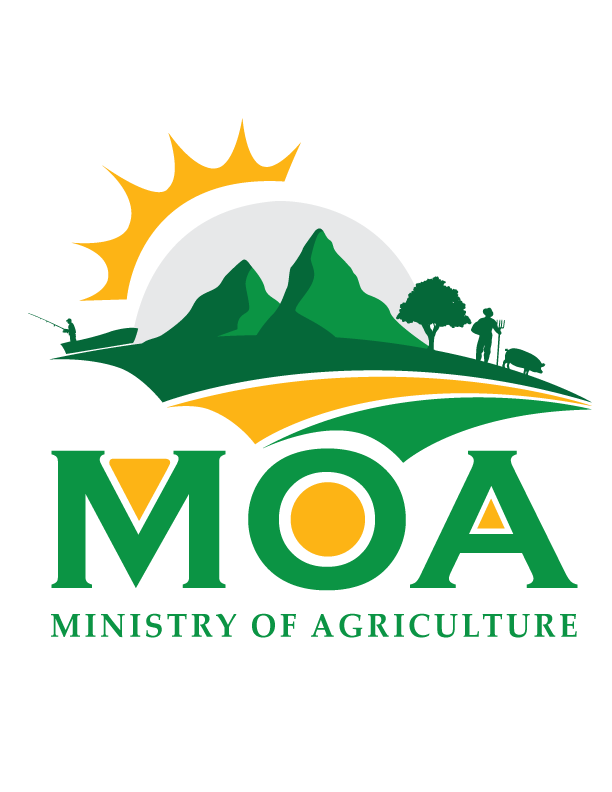FRESHWATER AND MARINE AQUACULTURE
Freshwater Aquaculture in Saint Lucia
Policy Environment
Through the development of the Agricultural Policy Framework and Strategy 2016-2021 and the Fisheries Plan 2013 -2021, the Government of Saint Lucia has expressed its commitment to the expansion and development of the aquaculture sub-sector. Aquaculture encompasses a very wide range of different aquatic farming practices concerning species and offers a wide range of options for diversification of avenues for enhanced food production and income generation in rural and sub-urban areas.
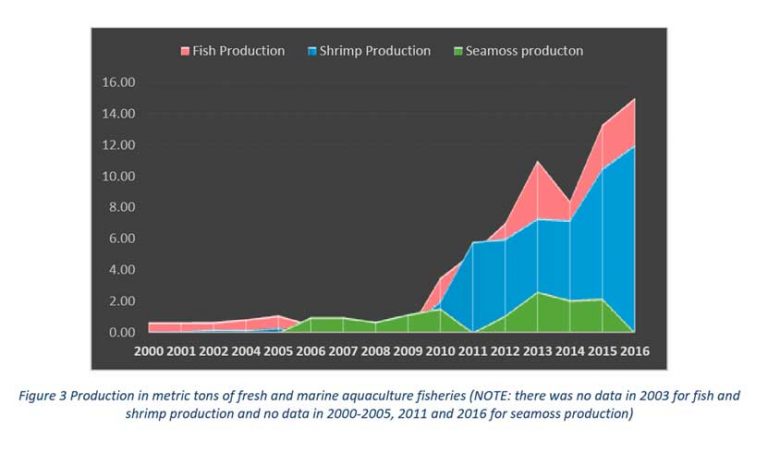
Freshwater Aquaculture Production
Tilapia, namely Oreochromisniloticus and O. mossambicus, the giant freshwater prawn, Macrobrachiumrosenbergii and Seamoss, mainly Kappaphycusalvarezii and Euchemacotinnii are the three types of organisms commercially grown in the aquaculture industry in Saint Lucia. Animal seafood production is primarily through growth in earthen ponds operated through manual inputs; however, there is budding interest in intensive aquaculture systems as well as aquaponic systems. Currently, there are six individuals’ operating systems of various complexity on the island. The Department of Fisheries operates a small demonstration system at its office in Point Seraphine since January 2015. The system is open to the public and lettuce, Kale, and Basil has been produced. In response to the growing interest in aquaponics two officers from the Department and two from the Ministry’s Engineering Unit have attended short courses in aquaponics regionally to improve assistance to these farmers and enhance technology transfer.
Fish and shrimp are fed processed and farm made feeds. Substitute processed feeds are available locally but nutritionally complete feeds and suitable feed for intensive culture systems have to be imported as such are more expensive than local substitutes.
Two pond systems are in operation on the island. Earth ponds that range in size from 500 square meters to 2000 square meters and above ground BRC reinforced plastic 3000 gallon tanks. The prawn monoculture stocking rate is 10 prawn post-larvae per square meter. The tilapia monoculture stocking is Tilapia fry per square meter. For polyculture of both, with initial stocking of prawn post larvae, the stocking rate is 10 prawn post-larvae per square meter, and after 3 months of stocking tilapia fry, the stocking rate is 1 fry per 20 square meters. The hatchery produces 80,000 tilapia fish-fry and 1,000,000 post larvae annually to meet demand. The industry is supported by the national hatchery that meets the 80 registered farmers demand to support 18 ha of pond production area (2016).
Farmed fish production increased from 3.5 tons in 2010 to 15 tons in 2016, whilst shrimp production increased from 2 tons in 2010 to 12 tons in 2016 (Figure 3) driven by the construction and operations of the national hatchery with a supported expansion of the industry.
Hatchery support
The Government operates two aquaculture facilities, the Union aquaculture Facility in the north and the Beausejour Prawn Farm in the south of the island. The Union aquaculture facility was completed in December 2010 and opened in March 2011. It is located at union in the north of the island. The hatchery comprises two buildings and eight ponds, 500m2 in area, used for shrimp and tilapia broodstock. With the present broodstock, the facility can produce 6,000,000 shrimp post larvae and 100,000 tilapia fingerlings. The facility not only exists to provide farmers with a stable supply of high quality seed stock but also to provide training for existing and prospective farmers. The Beausejour Prawn Farm is located in Beausejour, Vieux Fort in the south of the island, the prawn farm was opened in 1988. It produced shrimp post larvae for farmers until the construction of the Union aquaculture facility in 2010. The facility comprises two buildings and three ponds 600m2 each. It is currently used as a germ bank with for the aquaculture unit. It is a small hatchery and can produce 250,000 post larvae per year. Given its size it is well suited for use as a training facility and has been used by schools in the south to satisfy the aquaculture component of the agricultural science syllabus. Aquaculture is offered as an elective as part of the GSEC requirements for the agricultural science program. Most schools do not have access to ponds and as such utilize the facility for that purpose. Thus exposing more students to aquaculture.
Market availability
Cultured fish and prawns are mainly sold to the islands only large fish processing facility – The Saint Lucia Fish Marketing Co-operation (SLFMC), restaurants and hotels and the general public; while seamoss products are more widely sold directly to consuming households with some sales to direct to supermarkets and the SLFMC. Contrary, marine captured fish has more market pathways.Fish are limited to minimal processing, namely gutting, scaling and producing two main cuts: steaks and cutlets.Seamoss processing is more advanced with the production of drinks and other edible products as well as cosmetic products such as soaps.
Challenges
- Climate change continues to affect the operations of fish farmers. Severe periods of draught significantly reduce water available to aquaculture farmers and have the potential to cause conflict with other users of the resource.
- Increase flooding of valleys and low lying areas have discouraged the construction of ponds in these areas. Consequently persons are becoming more interested in more intensive forms of aquaculture such as tank culture and aquaponics.
Low farmer production due to poor quality feeds and poor farm management
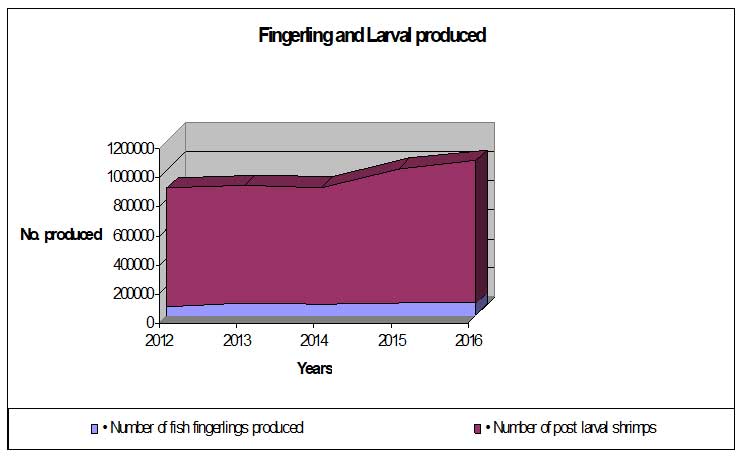
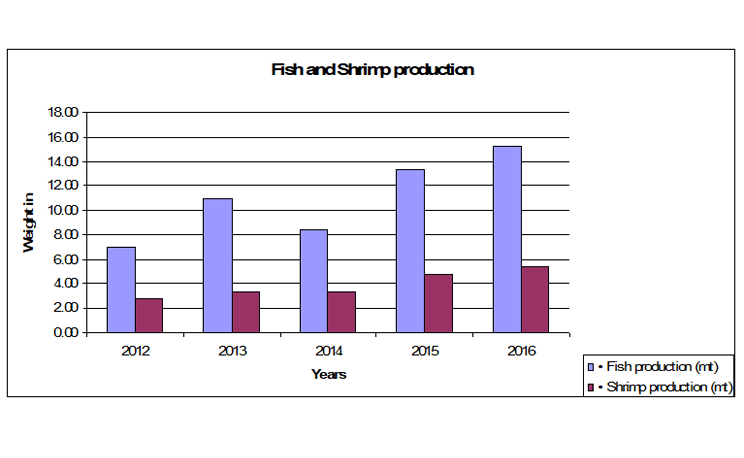
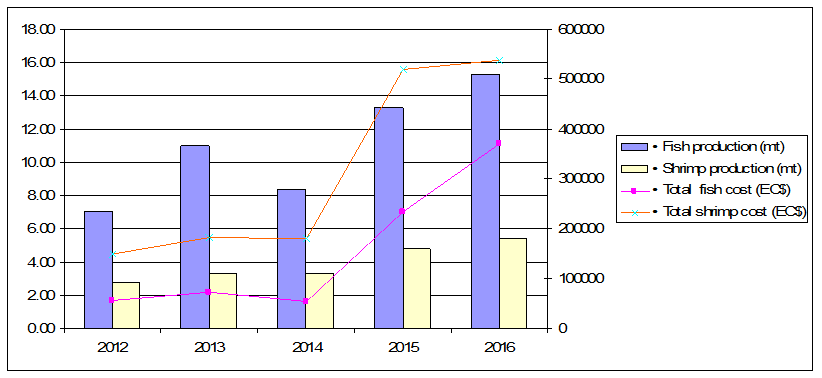
Recommendations
- Development and implementation of water resource management strategies in periods of drought so the extraction of water can be better managed.
- Source cheaper high quality feedregionally and internationally.
- Increase training of farmers and Fisheries staff in feed formulation.
- Research and develop a nutritionally complete feed using local materials.
- Development land management plans to identify suitable land space for aquaculture expansion.
- Research market demand for tilapia and develop and implement strategies to meet and create an improved market environment to increase farmer sales.
OUR TEAM



CONTACT US
- Vaughn Serieux
- Phone:454-7439
- Cell:1758-725-1728
- Email: vaughn.serieux@govt.lc
- Kate St Mark
- Phone: 1758-
725-1808
- Ezechiel Joseph Jr
- Phone: 1758-
725-1941
- Ed Paul
- Phone: 1758-
- Kelvin Jn Baptiste
- Phone: 1758-
- Glen Henry
- Phone: 1758-
- Ruben Soannes
- Phone: 1758-
- Emmanuel Fedee
- Phone: 1758-
- Benedict Brown
- Phone: 1758-
